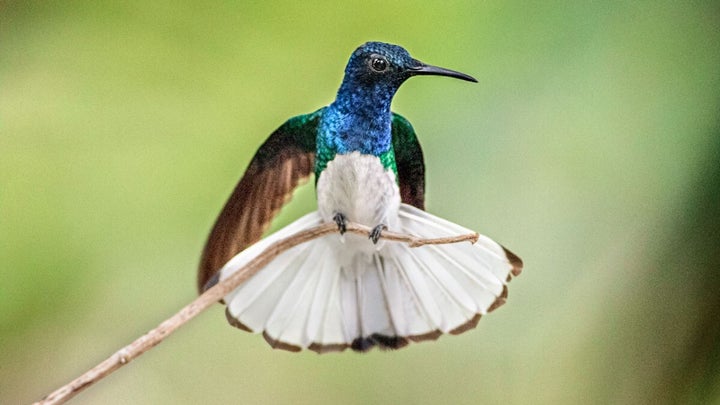Researchers have found that for females of one hummingbird species, looking more like males comes with a major benefit: being left alone.
In young white-necked jacobins, a relatively large hummingbird that ranges from southern Mexico to parts of South America, both young males and females have bright blue feathers on their heads. As the birds get older, most females lose their flashy colors and develop more muted green and white coloring. But not all of them.
About 20% of adult female birds in one population in Panama kept the bright blue plumage typically seen on adult males, according to the study, which was published in the journal Current Biology this week.
To investigate what this might mean, researchers did a couple of things. They put tracking tags on some birds to monitor their feeding behavior. In a slightly more morbid turn, they also put out taxidermied birds to observe the reactions from live birds, CNN reports.
They noticed a few things. For one, males had much more sexual interest in the dull-colored females. But males were also much more aggressive toward those females during feeding time, chasing, pecking and even body-slamming them, according to The New York Times. So the brighter-colored females ― the ones who looked like males ― got more time to eat without being bothered.
“Our tests found that the typical, less colorful females were harassed much more than females with male-like plumage,” lead researcher Jay Falk of the Cornell Lab of Ornithology said in a news release. “Because the male-plumaged females experienced less aggression, they were able to feed more often ― a clear advantage.”
This is a big deal, since hummingbirds need to eat constantly. An easier time feeding can make a huge difference in their survival.
Falk told the Times that it’s still unclear what the mechanism is that allows some female birds to retain their bright colors into adulthood, but he hopes to do more research into it.
RELATED…
Related
Trending
Source: Read Full Article










